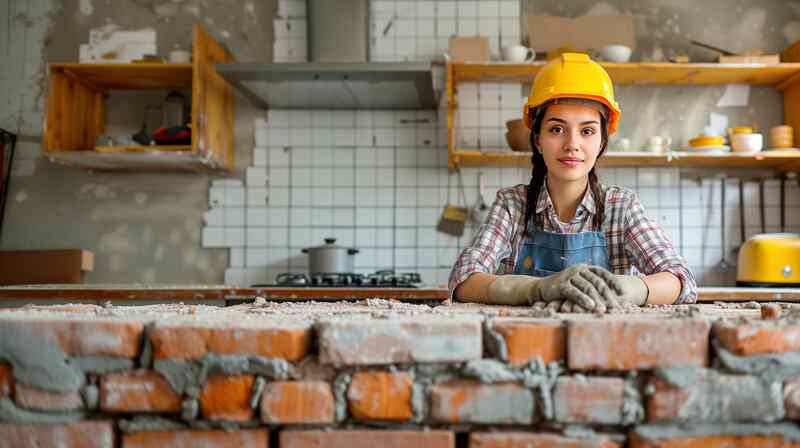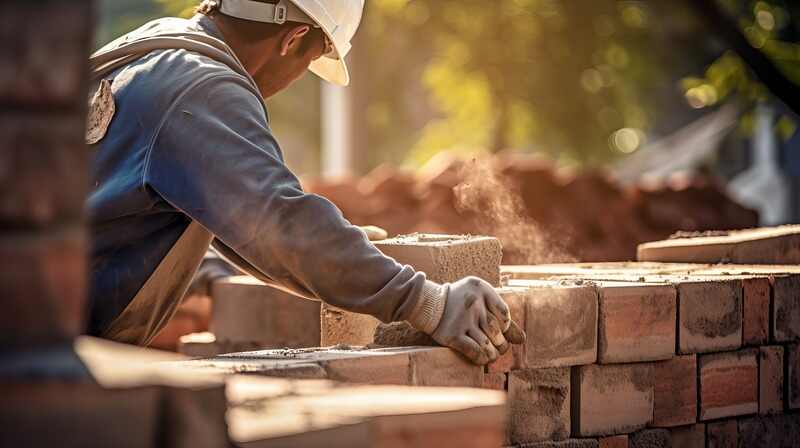Contractor’s Guide: Best Insulation Types Explained
Masonry is easy to appreciate. Just think of an old stone house or a red brick fireplace—these structures are undeniably beautiful. But what most people don’t know is the work that goes into them.
Masonry work is an important skill for anyone interested in the construction industry. It adds both structural integrity and aesthetic quality to all of your builds.
Here’s what you need to know to offer services as a mason or work with specialty contractors in masonry house construction.
What Is Masonry Construction?
Masonry work is a specialized type of construction. It involves stacking materials like brick and stone to build structures. Masons use mortar to bind the individual units together.
Masonry structures are very durable, which is a huge plus for most buildings. But because of their specialized nature, it’s a costly option. If you’re a contractor thinking of offering this service, it’s a good idea to ask for a deposit from customers.
RELATED ARTICLE — How To Invoice for Handyman Services
Types of Masonry Construction

There are many different types of masonry used in construction projects. Here are some of the most common examples:
Brick
Brick masonry is extremely popular. Bricks are uniform in size and lighter than some other materials, which makes them easy to stack. But they aren’t as durable as stone, and there are fewer size and color options.
Stone
You’ll find stone masonry work examples in classic old homes. You can even see them in remnants of destroyed structures where stone walls remain.
Stone is a natural material with many size and color variations. But only a skilled mason can fit the different pieces together effectively, and it’s an expensive process. The structures are also weighty and thick, which reduces floor space.
Concrete
Instead of brick, you can use concrete blocks. They’re also uniform in size, which makes them easy to work with. But you have many more choices regarding finishes and color variations. That’s because you can order concrete blocks manufactured according to project specifications.
Concrete blocks are heavy. They’re hard to transport and position, which increases costs.
Glass blocks
Glass blocks became popular in the 1930s and 1940s. But they’ve fallen out of favor since then because they’re such a specific style.
You can buy blocks in a choice of sizes and assemble them with mortar to provide natural light while protecting privacy. They aren’t as heavy as some materials and can be easier to work with due to uniform size and customization.
Rammed earth
Rammed earth is an older construction method that requires specialized skills. You start construction by building a framework for walls out of two parallel panels. Then, you fill the open space between the panels with a layer of damp earth and use a pneumatic tamper to compress the materials.
Eventually, you fill the entire frame with compacted earth and remove the panels, leaving only the rammed earth wall behind.
This method offers some advantages, including excellent noise and temperature control. But it’s not common in city settings because it’s not nearly as durable as concrete and brick.
Insulating concrete form
With this construction method, you use insulated concrete forms to hold fresh concrete in place. You end up with concrete walls sandwiched between two layers of insulation. This creates a strong and weather-resistant wall. Because the forms are customizable, and you only add concrete after they’re in place, you don’t have to work with heavy materials.
Translucent concrete
Translucent concrete is a concrete-based product with light-transmitting properties. Optical fibers spread throughout the concrete are on both sides of the block. These optical fibers serve as slits, letting light come through.
While not as common as its traditional counterpart, translucent concrete can be more energy efficient.
Hempcrete
Hempcrete is a composite material made of hemp and other natural materials, like a lime-based binder. It’s classified as a bio-composite. It can take the form of hemp blocks or be cast in place.
Hempcrete is an energy-efficient building product because of its high thermal absorption capacity. While it’s less common, it’s very eco-friendly.
What Are the Advantages of Masonry Construction?
There are many masonry pros to consider, including the following:
- Fire Protection. Many masonry materials are fire-resistant or inflammable. This means that structures built with them are often safer. A stone wall or brick wall won’t burn like a wall framed in wood.
- Diverse Designs. Masonry construction uses many beautiful materials, from brick to stone to glass blocks. You can choose a design that works for your project.
- Longer Lifespan. Stone, brick, and many other masonry materials are extremely durable. They can last for hundreds of years and withstand serious weather events.
- Comfort. Occupants often find buildings made with masonry techniques are more comfortable. Because of the materials’ added thermal mass, these structures may be quieter and maintain a steadier temperature.
- Increased Property Value. Masonite construction is expensive, but that means it often increases property value. The aesthetics, improved safety, and energy efficiency are perks for many potential buyers.
RELATED ARTICLE — How To Write an Invoice for Construction Work (With Free Template)
What Are the Disadvantages of Masonry Construction?
There are also some downsides to masonry construction. Here are some of the biggest disadvantages:
- Longer Construction Period. It takes time to stack and mortar individual units. And you can’t do it in rain or bad weather. As a result, projects may take longer.
- Limited Space. Masonry materials are thick and heavy. They can result in reduced floor space or square footage. This makes it harder to incorporate other design elements.
- Specialized Construction Skills. Licensed construction professionals need experience in masonry construction. Not everyone can fit the materials together in a structurally sound and durable way.
- High Cost. Masonry materials almost always cost more than other options. And project owners also need to be comfortable with higher labor costs. Some masons have to offer financing, which makes it possible for more homeowners to choose masonry construction. They can pay over time instead of upfront.
- Heavy Materials. Brick, stone, and other masonry materials are heavy, which increases transportation costs.
- Labor-Intensive Repairs. Because of the size, weight, and stability of masonry materials, repairs and modifications are difficult and labor-intensive.
RELATED ARTICLE — How To Make an Estimate for Construction (In 7 Steps)
4 Tips To Select the Best Masonry Building Materials

Not sure which materials to use? Here are some factors to consider:
- Durability. Some materials are more durable than others. For example, stone is more likely to withstand the elements and the test of time compared with glass blocks. Assess the area and the project’s needs.
- Utility and Functionality. Different materials have different functions and uses. Glass blocks let in light. You can customize concrete. Stone comes in more colors and variations than brick. Consider how you’ll use the material to select the right option.
- Longevity. Consider the material’s lifespan. Stone structures, for example, have been around for hundreds of years. While they come at an added cost, their permanence may be attractive in some applications.
- Maintenance. Some materials require more maintenance than others. Bricks may need to be sealed, and mortar joints may crack and need repair. Property owners should have a realistic idea of maintenance costs. They don’t want to be surprised in the future when they receive an invoice for construction work with a high price for maintaining their masonry.
RELATED ARTICLE — How To Estimate a Masonry Job
Win More Clients With Quick and Professional Estimates
If you perform masonry work, accurate estimates are key to project success. Use Joist to make the whole process easier.
With Joist, you can create and share estimates in just minutes. The easy-to-use mobile estimating tool is packed with powerful features built for contractors—including Deposits, Markups, and Photos. Joist helps you show off your masonry skills and get hired.